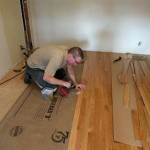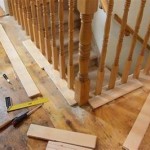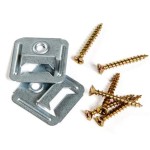Best Power Tool For Cutting Laminate Flooring Edges: A Comprehensive Guide
Installing laminate flooring can significantly improve the aesthetics and value of a property. A critical aspect of this process involves accurately cutting the laminate planks, particularly when navigating edges, corners, and obstructions. Selecting the appropriate power tool for these intricate cuts is essential for achieving a professional and seamless finish. The best tool simplifies the process, minimizes chipping and splintering, and ensures precise fitting around door frames, pipes, and other obstacles. This article will delve into the various power tools suitable for cutting laminate flooring edges, examining their pros, cons, and specific applications to help determine the optimal choice for different scenarios.
The success of any flooring project hinges on the precision of the cuts. Inaccurate cuts can lead to unsightly gaps, uneven surfaces, and ultimately, a less durable and visually appealing installation. Choosing the right power tool is not simply a matter of convenience; it is a critical factor in ensuring the long-term performance and aesthetic quality of the laminate flooring.
Understanding the Challenges of Cutting Laminate Flooring Edges
Laminate flooring presents unique challenges when cutting edges due to its multi-layered composition. The top layer is often a durable, wear-resistant surface designed to mimic the appearance of natural wood or stone. Beneath this lies a core layer, typically made from high-density fiberboard (HDF) or medium-density fiberboard (MDF). This core provides structural stability but can be prone to chipping and splintering if not cut properly. The bottom layer is a balancing layer that helps to prevent warping and moisture absorption.
Cutting laminate flooring requires a tool that can cleanly and precisely slice through all these layers without causing excessive damage. The edges are particularly vulnerable to chipping, especially when cutting along complex curves or into tight corners. A tool with a sharp blade, controlled speed, and the ability to make plunge cuts is often necessary for achieving professional-looking results.
Furthermore, the environment in which the cutting is performed can impact the tool selection. Confined spaces, such as those around door frames or pipes, may limit the maneuverability of larger tools. Dust control is another consideration, as cutting laminate flooring can generate a significant amount of dust that can be both messy and potentially harmful to breathe. The ideal tool will incorporate features to minimize dust dispersion or allow for connection to a dust collection system.
Power Tools for Laminate Edge Cutting: A Comparative Analysis
Several power tools are commonly used for cutting laminate flooring edges, each offering distinct advantages and disadvantages. These include the jigsaw, oscillating multi-tool, circular saw, and miter saw. The suitability of each tool depends on the specific cutting requirements, the complexity of the project, and the user's level of experience.
Jigsaw: A jigsaw is a versatile tool that uses a reciprocating blade to make curved and intricate cuts. It is particularly useful for cutting around irregular shapes and navigating tight spaces. Jigsaws are relatively inexpensive and easy to use, making them a popular choice for DIYers. However, they can be prone to causing chipping, especially when cutting against the grain or when using a dull blade. A fine-tooth blade designed specifically for laminate flooring is essential for minimizing splintering. The jigsaw's base plate should be held firmly against the flooring to prevent vibration and ensure a clean cut. The user should also consider the jigsaw's orbital action, as a lower setting can help to reduce chipping on delicate materials.
Oscillating Multi-Tool: An oscillating multi-tool is another versatile option that uses rapid oscillations to make precise cuts. It is particularly effective for making plunge cuts, which are necessary for cutting into the middle of a laminate plank without starting at the edge. Oscillating multi-tools are well-suited for cutting around door frames, pipes, and other obstacles, as their compact size and maneuverability allow them to access tight spaces. As with jigsaws, using a blade specifically designed for laminate flooring is crucial for minimizing chipping. The multi-tool's variable speed control allows the user to adjust the cutting speed to suit the material, further reducing the risk of damage. The key is to practice using light pressure and allow the blade to do the work.
Circular Saw: A circular saw is primarily designed for making straight cuts in large sheets of material. While not ideal for intricate edge work, a circular saw can be used to make initial cuts to size the laminate planks before using another tool for the final trimming. When using a circular saw, a sharp, fine-tooth blade is essential for preventing chipping. The laminate plank should be firmly supported to prevent vibration and ensure a clean, straight cut. A circular saw with a blade guard and dust collection port enhances safety and cleanliness. The circular saw is not effective for curved cuts; rather, it's best suited for long, straight cuts, reducing the overall amount of "edge" work that requires a more specialized tool.
Miter Saw: A miter saw excels at making precise angled cuts, such as those required for corners and transitions. While not suitable for curved cuts, a miter saw can be used to create clean, accurate edges on laminate planks. The key to achieving good results with a miter saw is to use a blade designed for cutting non-ferrous metals or plastics, as these blades typically have a higher tooth count and produce a cleaner cut. The laminate plank should be firmly held against the fence of the miter saw to prevent movement during the cut. Some miter saws also include a laser guide, which can help to improve accuracy. Similar to the circular saw, the miter saw minimizes the overall edge work required.
Key Considerations for Selecting the Right Tool
Several factors should be considered when selecting the best power tool for cutting laminate flooring edges. These include the type of cuts required, the complexity of the project, the user's skill level, and the budget.
Cut Type and Complexity
The type of cuts required will significantly influence the choice of tool. Straight cuts are best accomplished with a circular saw or miter saw, while curved and intricate cuts require a jigsaw or oscillating multi-tool. Projects with numerous obstacles or tight corners will benefit from the versatility and maneuverability of an oscillating multi-tool. If only straight cuts are needed, then the circular saw or miter saw will be ideal. If there are curves and edges that need to be cut around, then the jigsaw or oscillating multi-tool is the proper choice.
User Skill Level and Experience
The user's skill level and experience with power tools should also be taken into account. Jigsaws and oscillating multi-tools are generally easier to use than circular saws and miter saws, making them a better choice for beginners. If the user has more experience, a miter saw or circular saw offers a more efficient and accurate method of cutting straight edges. Proper safety measures must always be taken when using any power tool, regardless of experience level.
Blade Selection and Maintenance
The blade is as important as the power tool itself. Using the wrong blade can lead to chipping, splintering, and inaccurate cuts. A fine-tooth blade specifically designed for laminate flooring is essential for minimizing damage. The blade should be kept sharp and clean to ensure optimal performance. Dull blades can cause the tool to work harder, increasing the risk of kickback and reducing the quality of the cut. The blades should be inspected regularly and replaced when necessary.
Proper maintenance of the power tool is also crucial for ensuring its longevity and performance. This includes cleaning the tool after each use, lubricating moving parts, and storing the tool in a dry and safe place. Following the manufacturer's instructions for maintenance will help to prolong the life of the tool and ensure that it is always ready for use.
Ultimately, the best power tool for cutting laminate flooring edges is the one that best suits the specific needs of the project and the user's skill level. By carefully considering the factors outlined in this article, the user can make an informed decision and achieve professional-looking results.

Three Essential Tools To Cut Laminate Flooring Like A Pro In 2024

Ryobi Pgc21b Circular Saw Review Best Saws 2024

How To Cut Laminate Flooring Three Diffe Tools 2024

Best Tools To Cut Vinyl Plank Flooring Fast Easy Cuts

How To Cut Laminate Flooring A Diy Guide Fix

How To Cut Laminate Flooring Mgm Timber

Roberts 8 In Laminate Cutter For Cross Cutting 10 35 The Home Depot

3 Best Tools For Cutting Laminate Vinyl Floor Cutter Jigsaw Small Saw Mryoucandoityourself

How To Cut Skirting Board With A Multi Tool

Milwaee Oscillating Multi Tool Blades Pro Reviews
Related Posts








